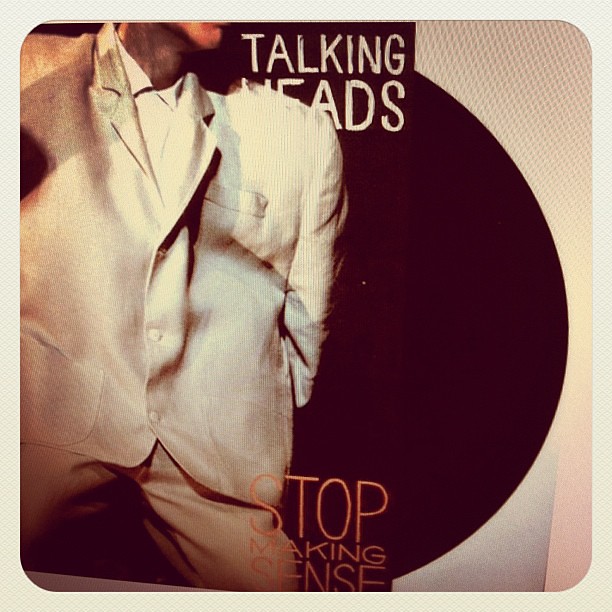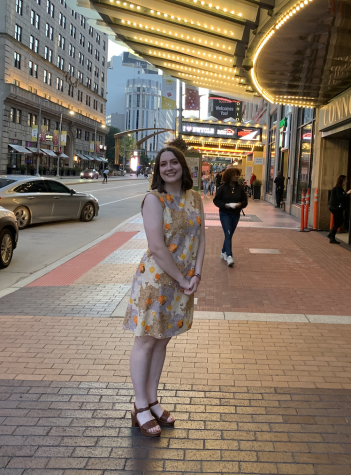On Sept. 11, Talking Heads’ 1984 concert movie “Stop Making Sense” made its 4K rerelease debut in IMAX theaters, courtesy of production company A24’s restoration. The film is regarded as one of the greatest filmed concerts in music history.
For the film’s rerelease, the band publically gathered for the first time since their 2002 Rock & Roll Hall of Fame induction. Their breakup in 1991 seemed messy and toxic to the public as tension was high between frontman David Byrne and bandmates Tina Weymouth and Chris Frantz; the latter two reflect on this in their memoir “Remain in Love.” Byrne admitted that he was “more of a little tyrant” during the Talking Heads hey day, but recognized the excitement that was shared for the restoration.
Audiences in IMAX theaters across the world submitted questions for the four band members (Byrne, Weymouth, Frantz and Jerry Harrison) to answer live from the Toronto International Film Festival. The discussion was moderated by Academy Award winning director and Talking Heads fan Spike Lee. He was enthusiastic about the restoration and was able to get the group bantering about the film.
They specifically cited a few names that were integral to their movie making process in 1984, including its director, the late Jonathan Demme and visual consultant Sandy McLeod. They all fondly remembered how Demme and McLeod were able to capture subtle exchanges between the performers to preserve in the film’s final cut. They also mentioned director Hal Ashby’s multicam filming techniques, giving them the ability to capture moments otherwise lost because of doing take after take.
Lee also asked about Byrne’s iconic big suit, and he told the story of how a designer once said to him that “everything is bigger on the stage” – Byrne took this idea literally and ran with it. The band also shared some of their favorite songs in the movie and Harrison shared that “Girlfriend is Better” was one of the most fun to perform.
On a personal note, “Stop Making Sense” is one of my favorite albums of all time. It’s hard to put what makes the film and music so special, but I can highlight a few moments throughout that encapsulate its energy. I’ve written a piece on my love for “This Must Be The Place,” so I’ll only issue a reminder that it is the best of the best in music history.

For those unfamiliar with the film, “Stop Making Sense” opens with Byrne jamming to an acoustic, stripped down version of “Psycho Killer” only accompanied by a backing track. With each song, a member of the band joins the stage and each piece of the set is rolled out by the crew. “Heaven” invites Weymouth on bass, “Thank You for Sending Me an Angel” brings out Frantz on drums, “Found a Job” is when Harrison makes his debut and the rest of the talented ensemble springs into action with “Slippery People.” The energy never waivers from the second they come together to the very end.
A well-known number in “Stop Making Sense” is “Life During Wartime,” where Byrne and the ensemble showcase some of their most iconic dance moves and connected movements. The concert feels very loose and unplanned in its structure, but the points where they all stop what they’re doing to run together shows how every movement was deliberate. It would be remiss to not also mention their performance of “Once in a Lifetime” alongside “Life During Wartime” because not only are they both some of the most beloved songs in their catalog, but they have similar energy and audience reception.
If the last song of a concert drags or feels unceremonious, the entire audience might leave the venue bummed and wishing for more. Talking Heads didn’t make this mistake, instead performing “Crosseyed and Painless,” the fourth single on “Remain in Light.” As previously mentioned, the energy does not stop once during the concert’s run and the closing song is no exception. Every person on the stage put every remaining ounce of energy into what I consider to be the most electric performance on the record.
Even if you aren’t a Talking Heads fan (yet), anyone who appreciates musical history should get to IMAX theaters starting Sept. 22 and all other theaters Sept. 29.



